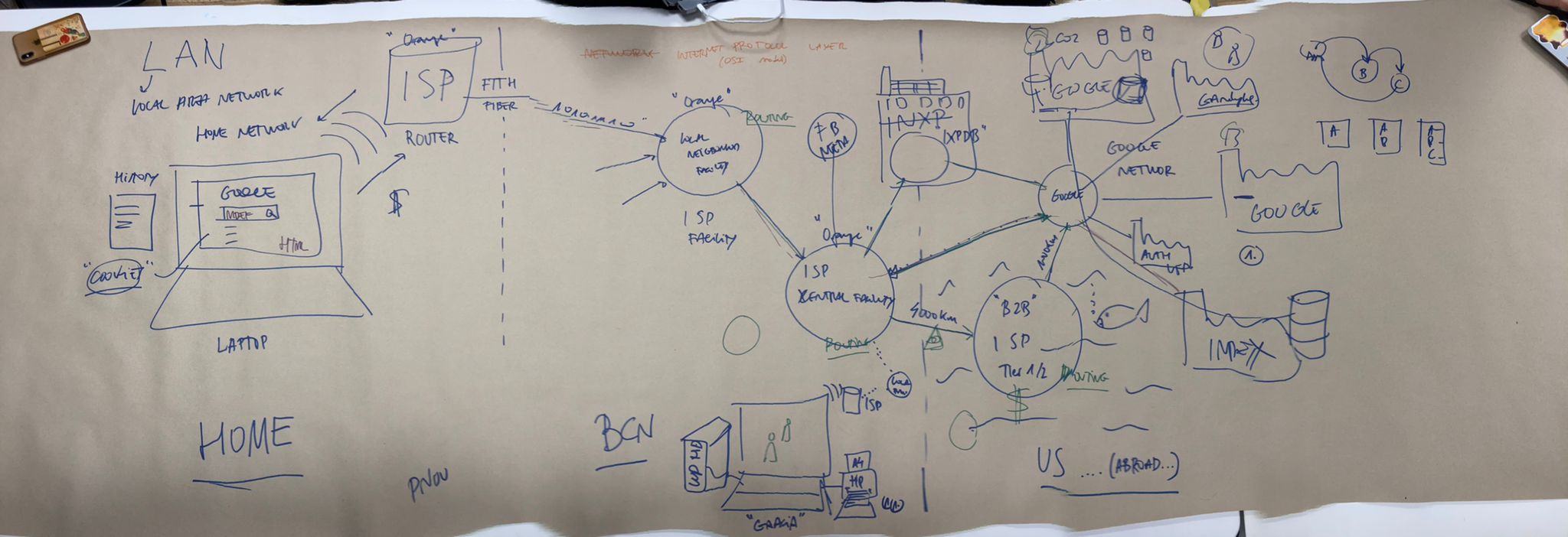Platforms vs. Protocols
We started out the class discussing how platforms differ from protocols in their nature. Most of Web2's biggest companies are building platforms, which are closed by design. We call them walled gardens for their goal to offer perceived freedom within the ecosystem but make it difficult (or outright impossible) to move data or user accounts out of them. This is due to the way big tech competes for their user's attention, which in turn translates to ad revenue. Although this might seem right now like this is the only way to build products on the web, this was not always the dominating paradigm. Most of the web's foundation – and these platforms foundations – is built on protocols, which are inherently open. They offer a way of communication that allows the user to choose in which way to receive, manage and send data. This means in a protocol you are free to switch services however you please, since the protocol only handles communication, not your data. Examples include HTTP (Hypertext Transfer Protocol), SMTP (Simple Mail Transfer Protocol) and FTP (File Transfer Protocol), all of them important pillars of the modern web. In that way the key takeaway from this class was: Build protocols, not platforms!
An Introduction to Gemini Protocol
To understand how today's internet came to be, it's important to look at how the web evolved as a protocol. Since it's invention in by Tim Berners-Lee at CERN in 1989, HTTP (Hypertext Transfer Protocol) served as the backbone for the ever evolving, modern web. HTTP handles the communication layer between (local and globally) networked computers by transmitting text and hyperlinks. It is acting as a protocol for requests and responses between instances (like a client and a server), it allows these to transfer HTML or CSS files, among other data types, that allow a browser to render a website.
But HTTP is not the only protocol for networked computers and it has, through its open architecture, allowed the web to mutate into something further away from the vision of their creators. Slow loading, JavaScript-heavy, multimedia websites with tracking cookies that enable a plethora of advertisements result in a debatable user experience.
This is why in the last years, many people have wondered how the web would look like if it was a more stripped-down, solely text-based protocol. Simple, restricted and fast by design, Gemini protocol is a proposal brought forward in 2019 by anonymous Solderpunk. (It is not meant to replace neither HTTP or Gopher, but coexist with them). With many open-source browsers, such as Lagrange (Mac) and Elaho (iOS) and a very active development community, the geminispace offers a different experience of browsing the web. Lightning fast and reduced to the bare essentials, namely text and links, it reminds me of the early days of the web in the laste 90s and early 2000s. Further, it's values privacy by design and is much lighter on the ecological footprint, due to file sizes which rarely exceed a few dozen Kilobytes. Further it highlights the sheer potential of links, which is the very heart of how the web started out – by drawing connections.
I decided to try out the Gemini protocol by setting up my own capsule (similar to a webpage). For that I used the free hosting service / community Flounder, which also offers an automatic HTTP-proxy of its sites. The site can be found in the geminispace at gemini://cernst.flounder.online/ and in HTTP under http://www.cernst.flounder.online. I have moved all of my important links and references there, to serve as a browser-independent bookmark list for me and for others. My next step is trying to host my own capsule on a gemini server running on the Raspberry Pi Zero.

My Gemini capsule in the Lagrange desktop browser.
Mapping the structure of the web
For the last part of the first class, we mapped out the topology of the modern web by retracing a Google search request through the network of ISPs, underwater cables and data centers, all the way to California, US and back.

A visual representation of a exemplary Google search request.
Cover photo by Alina Grubnyak on Unsplash
